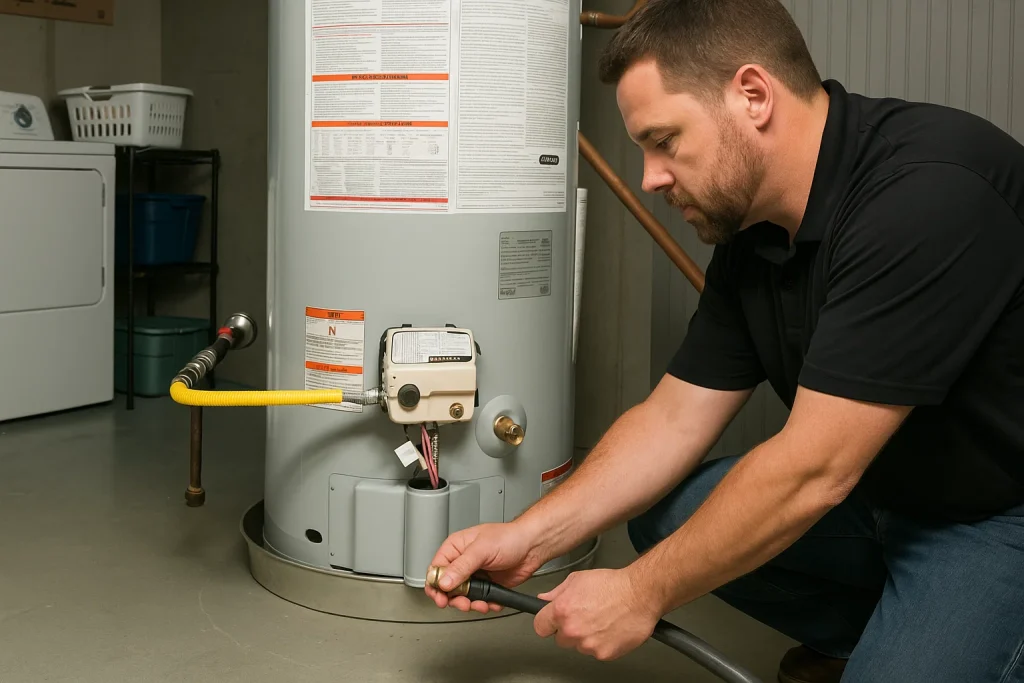As the days grow shorter and the weather begins to cool, many homeowners start preparing their homes for the upcoming fall and winter months. Hot water is something we rely on daily—for showers, laundry, and cooking—and the last thing you want is for your water heater to fail when the weather turns chilly.
The good news is that a little maintenance now can help prevent major issues later. With just a few key steps, you can keep your water heater running efficiently, extend its lifespan, and avoid the unpleasant surprise of cold water on a brisk autumn morning. Here are some practical water heater maintenance tips to take care of before fall sets in.

Schedule a Professional Inspection
Just like your HVAC system, your water heater benefits from a professional once-over at least once a year. During a routine inspection, a technician will check all of the major components, including the thermostat, heating elements (for electric units), burner assembly (for gas units), pressure relief valve, and tank condition. An inspection not only catches small issues before they become big problems but also ensures your water heater is running safely.
Flush the Tank to Remove Sediment
Over time, minerals from your water supply settle at the bottom of the water heater tank. This sediment buildup can reduce efficiency, cause strange popping or rumbling noises, and even shorten the life of the unit. In areas with harder water, this problem can become more pronounced.
Flushing the tank before fall is a smart move because you’ll likely be using more hot water as temperatures drop. The process involves draining several gallons of water from the tank to clear out sediment. It can be messy and tricky without the right tools—so we encourage you to leave it to our team of professional plumbers.
Check for Leaks Around the Tank and Pipes
Look for moisture at the base of the tank, corrosion around pipe fittings, or water spots on nearby flooring. Catching leaks early allows for timely repairs, which can prevent the need for a full water heater replacement. If you spot any signs of rust or corrosion, that’s a strong signal that it’s time to call in a professional for evaluation.
Adjust the Temperature Setting for Efficiency
Most water heaters come set to around 140 degrees Fahrenheit by default, but lowering the temperature to 120 degrees is often recommended. This reduces the risk of scalding, lowers energy costs, and slows down mineral buildup in the tank. Fall is the perfect time to check and adjust your settings, especially as you look for ways to cut utility expenses heading into the colder months.
Consider Insulating Your Water Heater and Pipes
If your water heater is in a garage, basement, or other unheated area, insulating the tank and nearby hot water pipes can reduce heat loss. This simple step helps the unit work more efficiently and keeps water hotter for longer—especially useful as outside temperatures begin to drop.
Contact Performance Plumbing today for plumbing services in St. Louis, MO today!
